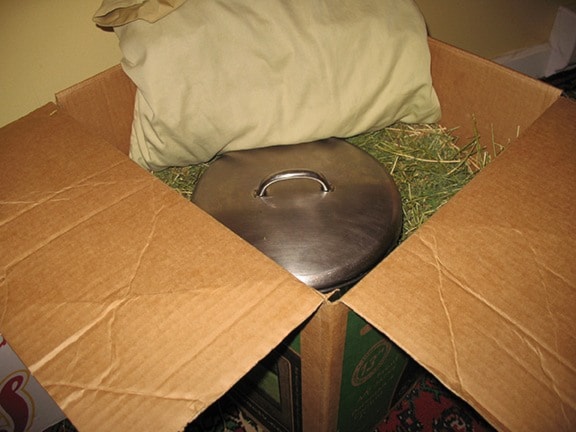This is the time of year when the closest we get to our gardens is the pantry, which is literally filled with the fruits of our labour.
It is also the time of skyrocketing hydro bills, even for those of us with iniquitous, carbon belching wood stoves, so let us discuss some cooking tricks that use very little electricity, if any.
Many of us will remember the Hydro campaign 20 years ago to encourage us to convert from fossil fuels to “greener” hydroelectric heat. Those of us who followed that advice are now facing ever-rising prices as well as an unbearably self-righteous explanation that these increases are for our own good because we simply use too much power.
I have come to resent every penny Hydro wrings out of my unwilling hands. David insulates himself somewhat from this angst by leaving me to handle the bills so he can claim ignorance of how much that extra heater in the workshop costs. He can wear thermal underwear and multiple sweaters indoors, he says, but he draws the line at the tuque. He has suggested that we can reduce our power bill by running an extension cord from the neighbour’s outside plug.
I, on the other hand, have discovered other methods to reduce consumption; besides, our extension cord doesn’t reach that far. I have disposed of my freezer, rarely use the dryer and have found a few cooking tricks, new and old, that use little or no electricity. Actually, some are just refinements of ancient methods like solar cooking and dehydration, but these rely on the sun so they have limited value right now.
One method that works any time relies on heating the food up first, then placing it into an insulated box to finish cooking. The only electricity used is for heating the food to begin with. I got a cardboard box and stuffed it with dry straw, making a nest in the middle to accommodate the pot, allowing for three inches of straw on the bottom and on all sides. I also stuffed an old pillowcase with more straw for the top.
First I tried stew, browning the meat then adding all the vegetables, broth and herbs once the meat was browned. I’ve found that this method resembles crock pot cookery in that the vegetables take as long as the meat to cook.
I brought the stew to a rolling boil, put the lid on, nestled it into the insulated box and laid the straw-filled pillowcase on top.
Three hours later the stew was done and still steaming; then I brought it back up to boiling on the stove and thickened it. David thinks I’m an extremist.
I’ve also tried rice and Scotch broth. The rice took two hours and came out nice and fluffy.
The Scotch broth needed to be reheated halfway through the process, but turned out well.
Today I parboiled some spareribs in the box for three hours to tenderize them before roasting in the oven.
I find this method so handy and user-friendly that I’m making this box an integral part of my kitchen.
Sure it takes longer to cook and needs a little forethought, but it will keep the Hydro bill lower.
I’ve made another box so I can cook two different things at the same time and if I find I’m using them a lot, maybe I can talk David into making something more permanent for me. I’ll point out that because I’m saving on the stove I’ll be less inclined to nag him about those heaters.
Next week we’ll talk about what to do once the soil thaws.
Please contact mary_lowther@yahoo.ca with questions and suggestions since I need all the help I can get.
